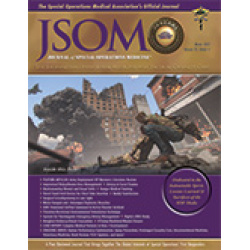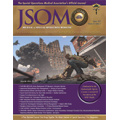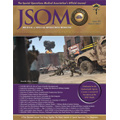Identification of Potentially Preventable Traumatic Injury Among Military Working Dogs Deployed During the Global War on Terror
Cwikla J, Edwards TH, Giles JT, Kennedy S, Smith B, de Porras DG, Scott LL 22(4). 122 - 129 (Journal Article)
Background: Prevention of deployment-related injury is critical for readiness of US military working dogs (MWDs). This study evaluated deployment-related injuries to determine if they were potentially preventable and identify possible abatement strategies. Methods: Data were collected on 195 MWD injury events that occurred between 11 September 2001 and 31 December 2018. Injuries were reviewed by a panel of veterinarians and categorized into groups based on panel consensus. The panel also established which interventions could have been effective for mitigating injuries. Multipurpose canine (MPC) and conventional MWD injury event characteristics were compared to identify meaningful differences. Results: Of the 195 injuries, 101 (52%) were classified as preventable or potentially preventable. Most (72%) of the potentially preventable injuries occurred in conventional MWDs, with penetrating injuries (64%) being the most common type of trauma. For the preventable/potentially preventable injuries, the most common preventative intervention identified was handler training (53%) followed by protective equipment (46%). There were differences between MPCs and conventional MWDs for injury prevention category, type of trauma, mechanism of injury, and preventative intervention (all p < .001). Conclusion: The application of a preventable review process to MWD populations may be beneficial in identifying potentially preventable injuries and preventative intervention strategies.


 Español
Español 





